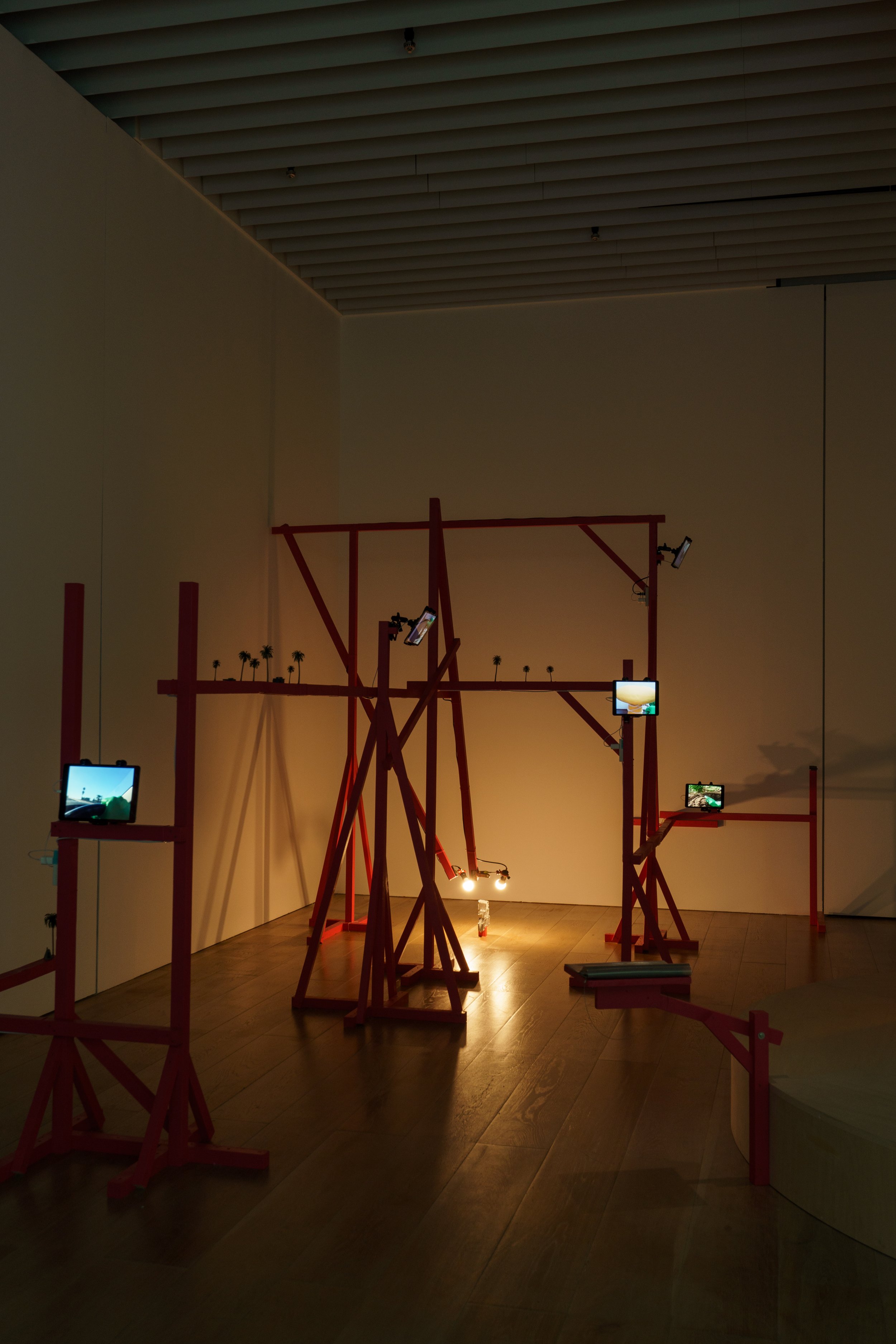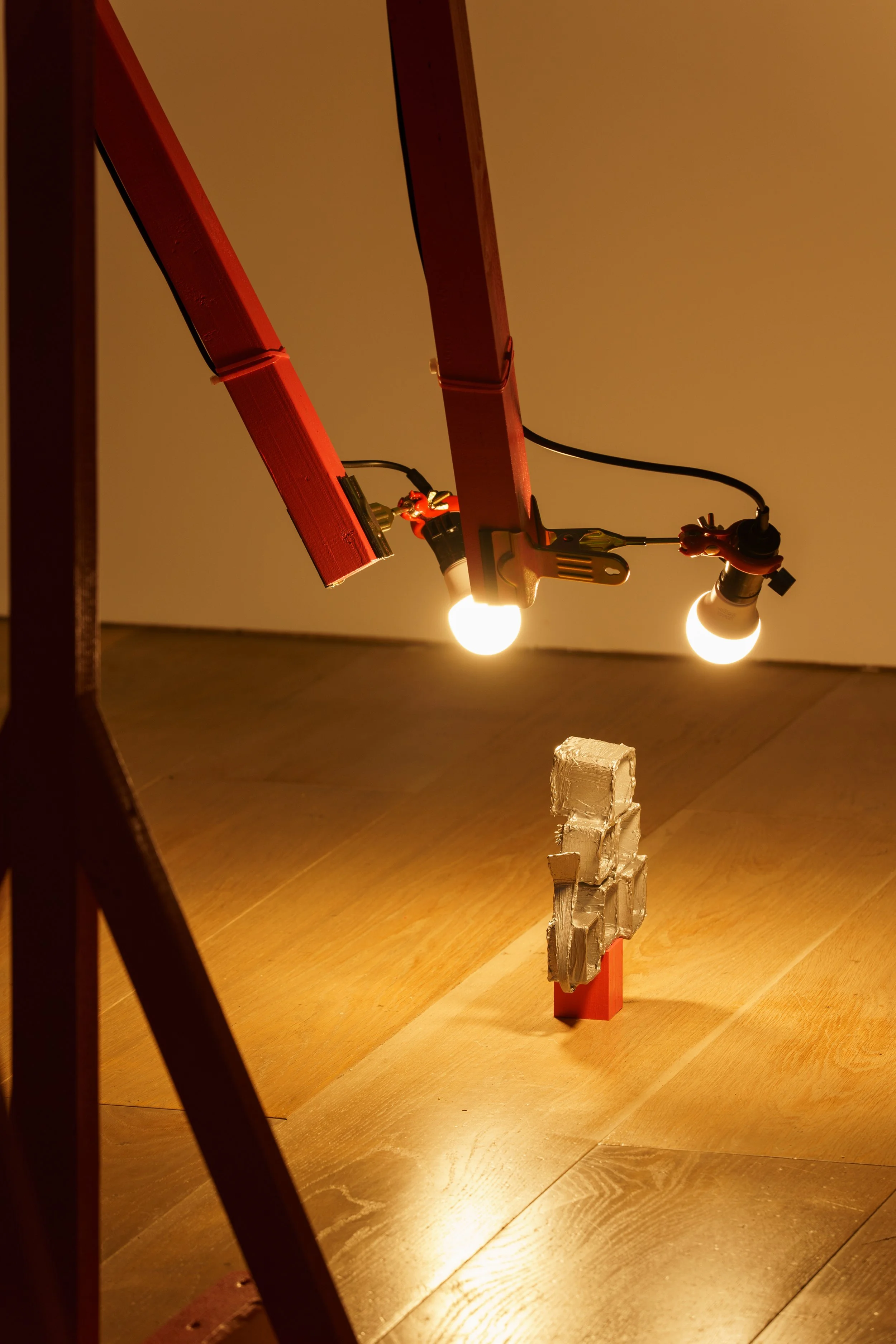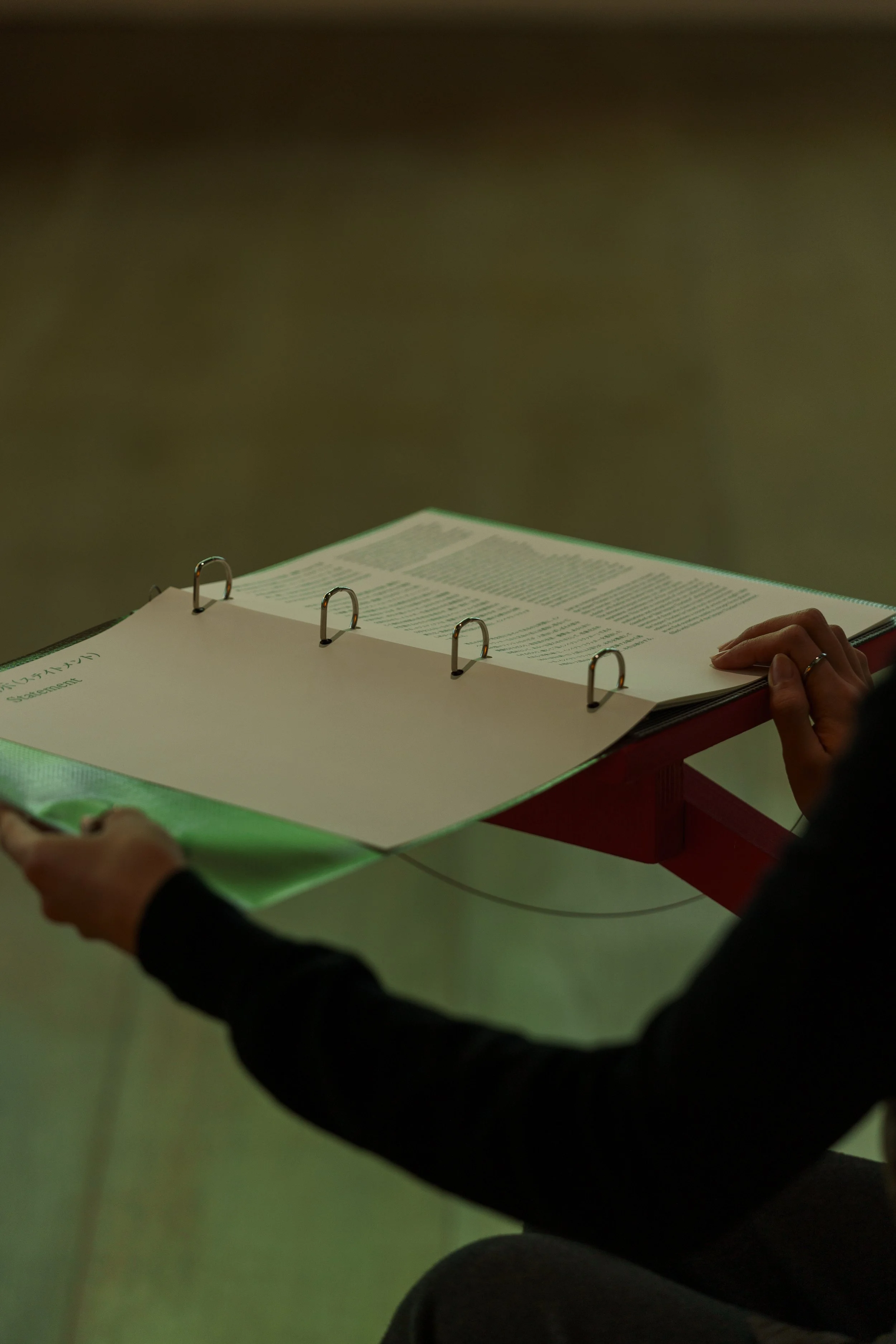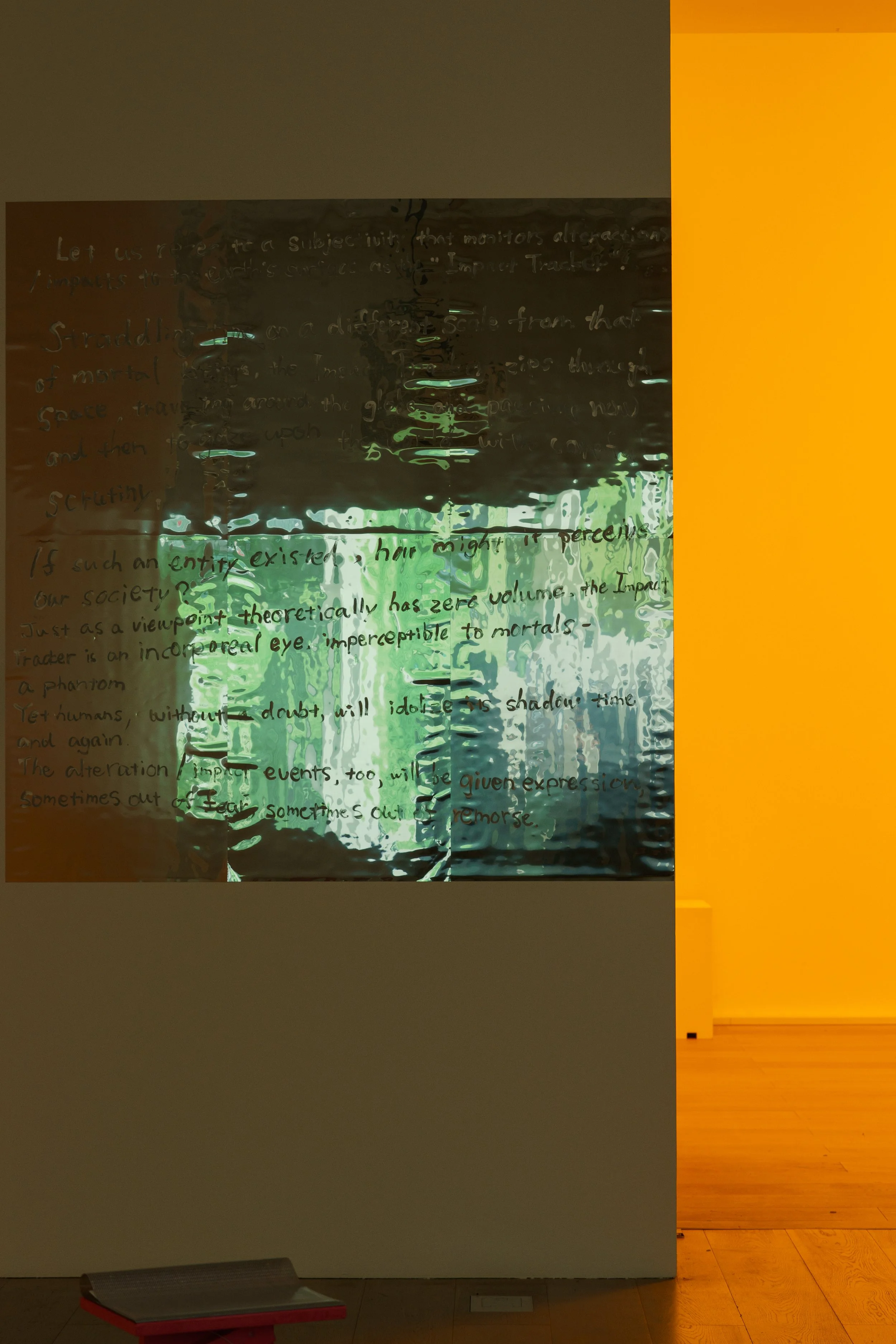Impact Tracker / Labor Rhythms
Exhibition design, 2025
-
Exhibition design for Asako Fujikura’s presentation in the group show MACHINE LOVE: Video Game, AI and Contemporary Art at the Mori Art Museum. The installation centered on a three-channel 3D computer-generated video work, Impact Tracker, and six short live-action pieces titled Labor Rhythms. Together, these works address two forces that shape contemporary landscapes—logistics and extractivism. In response to the homogenization of suburban and hinterland environments brought about by global supply networks and resource extraction, the works present a perspective in which incidental particularities—habits, play, oral traditions, and improvised constructions—inscribed into land and objects may serve as occasions for cutting into and reconfiguring the continuity of such networks.
In the spatial design, the large central column of the gallery was not treated as an obstacle to be avoided, but rather as an element for visitors to lean against. A bench and a booklet stand were installed around the column, which was designated as the primary viewing position. Based on the human field of vision from this point, the maximum dimensions of the three projection screens and their placement were calculated to achieve both a sense of enclosure and continuity across the imagery.
On the opposite side of the room, a red structural frame was devised by reverse-calculating from the spatial arrangement of the small monitors. Built improvisationally yet grounded in structural logic, it incorporates diagonal braces and reinforcements without concealing or exaggerating them, presenting them simply as elements that belong there by structural necessity. This coexistence of necessity and improvisation allows the structure to spatially bring together two of the work’s contrasting themes: “infrastructure” and “handwork.”
森美術館で開催されたグループ展「マシン・ラブ:ビデオゲーム、AIと現代アート」での、藤倉麻子の展示空間のデザイン。本インスタレーションは、三面の3DCG映像《Impact Tracker》と、六台の小型モニターによる短い実写映像群《Labor Rhythms》を中心に構成された。これらは、現代の風景をかたちづくるふたつの力――ロジスティクスと採取主義――を主題とする。グローバルな供給網と資源採掘がもたらす郊外・後背地の均質化に対し、土地や物に刻まれる偶発的な特異性――習慣や遊び、言い伝え、即興的な工作物など――が、ネットワークの連続性を切断・再編するための契機となる視点を提示している。会場設計では、展示室中央の柱を回避すべき障害物ではなく、鑑賞者が背を預けるための装置として活用している。柱周囲にベンチと冊子台を設置し主要な観賞点と設定しつつ、この位置からの人間の視野角をもとに三面スクリーンの最大寸法と、包囲感と映像の連続性を両立させる設置位置を導出している。
スクリーンの反対側に展開された赤い構造体は、立体的にレイアウトされる小型モニター群の位置から逆算し、力学的合理性に基づく骨組みを即興的に構築したものである。荷重を受け止める斜材や補強材を隠すことなく、かといって強調するでもなく、ただありうべき要素として扱い現している。必然性と即興性が併存するこの構造が、「インフラ」と「手仕事」という、遠く離れた本作のふたつの主題を空間的に重ね合わせる。
-
Name Impact Tracker / Labor Rhythms
Date 13 FEB. 2025 – 8 JUN. 2025
Type Exhibition design
Venue Mori Art Museum, Tokyo (as part of MACHINE LOVE: Video Game, AI and Contemporary Art)
Venue Design Takahiro Ohmura
Structural Engineering Tomomi Kimura
Construction Hidetoshi Inanaga and Takahiro Ohmura
Booklet Design Hirotaka Honjo
Music and Sound in Video ermhoi
Music from Previous Work Takahiro Ohmura
Research and Writing “Supplement” Takahiro Ohmura
Translation for “Supplement” Gen Machida
Video Creation Asako Fujikura
Organizer Mori Art Museum
Photography Naoki Takehisa













